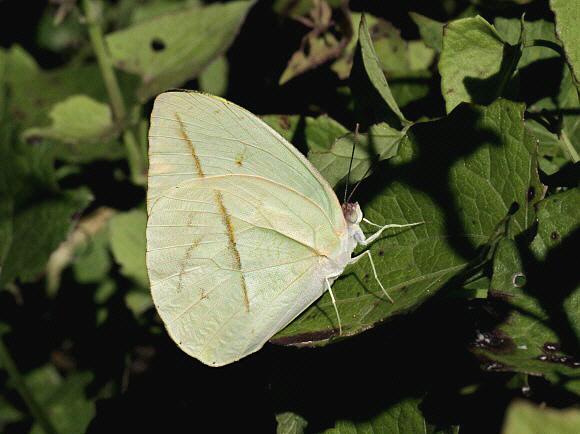
Introduction
The genus Rhabdodryas comprises a single species trite, which produces 4 named subspecies i.e. the nominate race trite, the Brazilian banksi, watsoni from the Dominican Republic, and cinnamon-rosea from Mexico.
Rhabdodryas trite trite is found from Colombia to Bolivia and Argentina.
Habitats
As with most other Coliadinae, trite is highly migratory in behaviour and can thus be found in a wide variety of habitats including rainforest, deciduous woodland, scrubby grassland and farmland. It can be found at altitudes between 0-1200m.
Lifecycle
The larval foodplant is Pentaclethra ( Mimosaceae ).
Adult behaviour
This species uses rivers as migration corridors, and can often be seen flying in strings of up to a dozen insects along riverbanks. Males commonly aggregate with other Coliadinae including various Phoebis species and Aphrissa statira, to imbibe mineralised moisture from river beaches.
These butterflies often form densely packed groups comprising of dozens of individuals. If alarmed the entire group erupts spontaneously, swirling in the air as a seething mass of fluttering yellow and white wings. When the danger has passed, they cautiously resettle one by one to resume feeding.
Late in the day the males leave the river beaches and normally sit about on the foliage of bushes for about half an hour, before eventually flying up into the forest canopy. Females spend most of their time in the canopy, but descend to oviposit on Pentaclethra saplings in light gaps.
